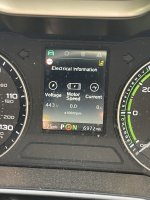Cricketer007
Standard Member
- Joined
- Feb 9, 2021
- Messages
- 32
- Reaction score
- 40
- Points
- 22
- Location
- Surrey, United Kingdom
- Driving
- ZS EV
reaching out to owners who have had their MG ZS EV for a good year and put some decent mileage on their cars ....
are you still experiencing good battery health i.e after a AC slow charge, are you still getting 450V and 163 miles range on normal?
or are signs of battery wear setting in?
thanks
are you still experiencing good battery health i.e after a AC slow charge, are you still getting 450V and 163 miles range on normal?
or are signs of battery wear setting in?
thanks
